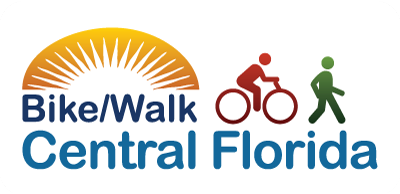 Bicycle advocates from across the state met in Clermont this past weekend to talk all things bikes. Hosted by Bike Florida, the City of Clermont and Orlando Health, the Nov. 13 gathering kicked off the 2015 Celebration of Cycling weekend. Bicyclist safety, the Coast-to-Coast Connector (C2C), and more were on the agenda. This year’s Celebration of Cycling coincided with the 36th annual Horrible Hundred bike race.
Bicycle advocates from across the state met in Clermont this past weekend to talk all things bikes. Hosted by Bike Florida, the City of Clermont and Orlando Health, the Nov. 13 gathering kicked off the 2015 Celebration of Cycling weekend. Bicyclist safety, the Coast-to-Coast Connector (C2C), and more were on the agenda. This year’s Celebration of Cycling coincided with the 36th annual Horrible Hundred bike race.
With Florida currently ranked the most dangerous state in the country for bicyclists, safety was a huge focus. Most of the day-long programming – which included multiple panel discussions and presentations as well as a bike/ped safety summit – addressed the need to make Florida roads safer for people who bike and walk.
But not everyone had the same solution for safer cycling in Florida.
Lane Control/Bike Lanes – two approaches to safe cycling
One session engaged the ongoing debate over lane control versus bike lanes. The lane control approach, taught by groups like Cycling Savvy, encourages bicyclists to ride on the road as a vehicle and take the lane (this is permitted by Florida law). Lane control advocates say that controlling a road lane can help a bicyclist be more visible to drivers and also encourages motorists to pass bicyclists at a safer distance.
Proponents of bike lanes argue that infrastructure (i.e. building effective bike lanes, cycle tracks, etc.) ultimately drives safer behavior changes in both motorists and bicyclists and is good for business. Some bike riders also feel more comfortable cycling in a bike lane or are not able to bike on the road. Lane control may not be an option for young children or people who bike at slower speeds.
The lane control/bike lane conversation continues to raise important questions about how we design roads for all types of bicyclists. It may not be an either/or solution but rather a combination of both safety strategies that helps improve bicycling conditions in Florida.
Closing the gaps in bike trails statewide
The City of Orlando’s new bike share (Juice), Florida’s SUNTrail system, Complete Streets best practices, and enforcement of bicyclist and pedestrian-related laws were some of the other topics discussed at the event.
Florida Senate President Andy Gardiner spoke on the SUNTrails expansion and his plan to close existing gaps in bike trails across Florida including the Coast-to-Coast Connector (C2C). Closing the gaps in the C2C is one of Bike/Walk Central Florida’s (BWCF) goals as well. When completed, the C2C would connect Titusville on the Atlantic coast with St. Petersburg on the Gulf coast allowing people to bike across the entire state by trail.
Putting Florida on a road diet
BWCF board chair and FDOT District 1 Secretary Billy Hattaway was the summit’s keynote speaker – his speech called for Florida to go on a road diet. Reducing road size can play a huge factor in improving bicyclist and pedestrian safety and leads to a 30% reduction in crashes. Hattaway also gave an overview of FDOT’s new Complete Streets standards. However, he emphasized that there isn’t a “one size fits all” approach to street design because every road is different and has unique needs. Bike Florida honored Hattaway at the summit with the 2015 Share the Road Visionary Award for his role in advocating for bicyclist and pedestrian safety. Congrats Billy Hattaway and thank you for all that you do to make Florida roads safer for all users!
The day concluded with some afternoon breakout sessions, a bike/ped safety summit on law enforcement and a grant workshop followed by an evening street festival in Historic Downtown Clermont. See full summit schedule below:



